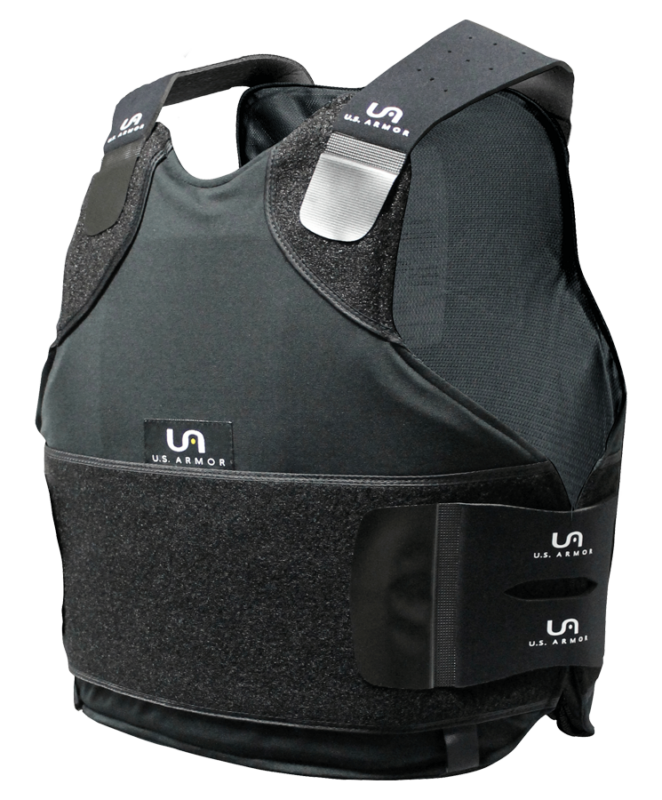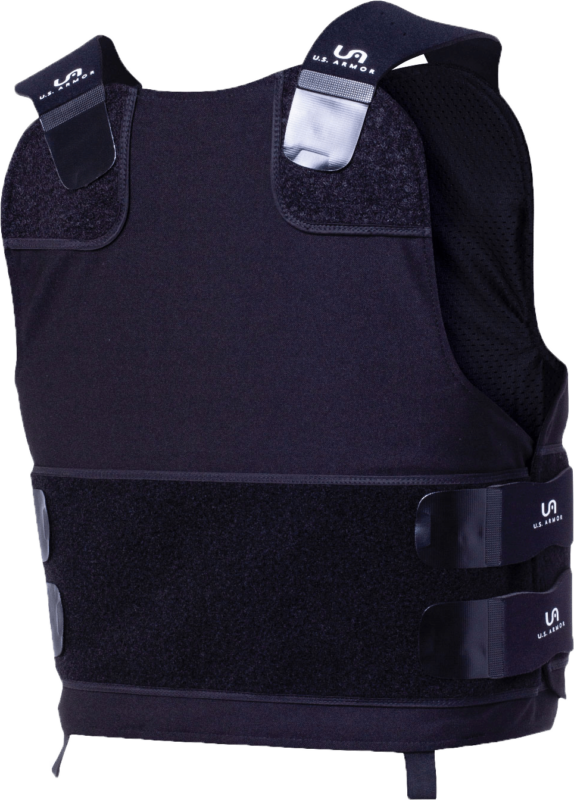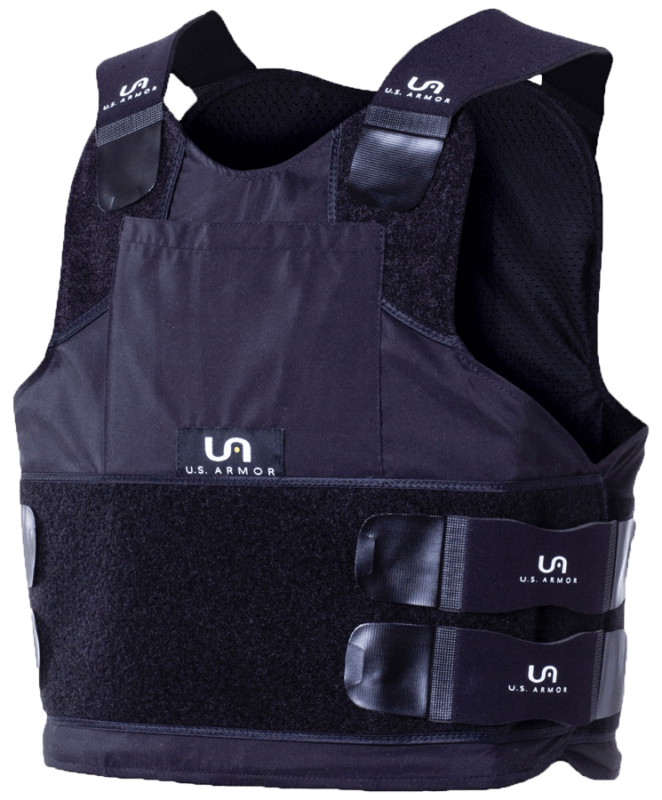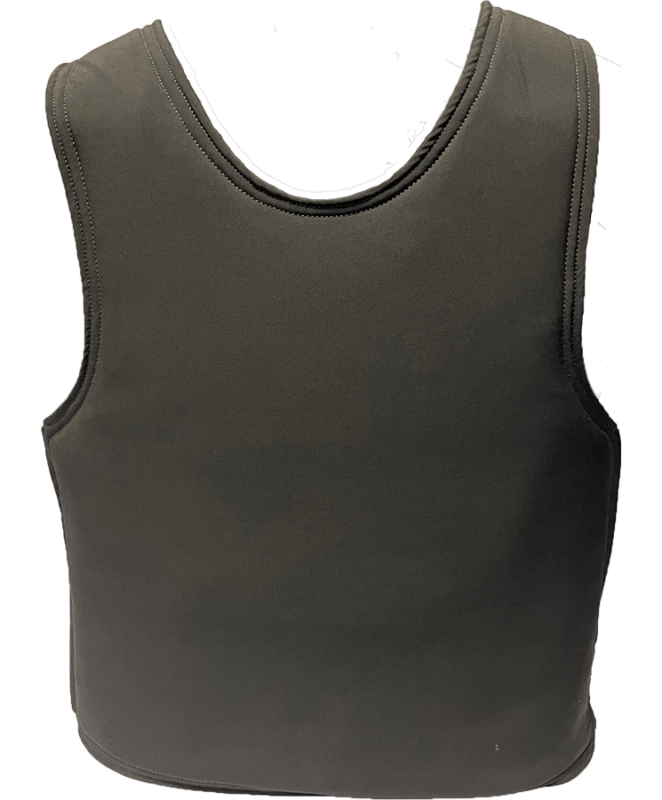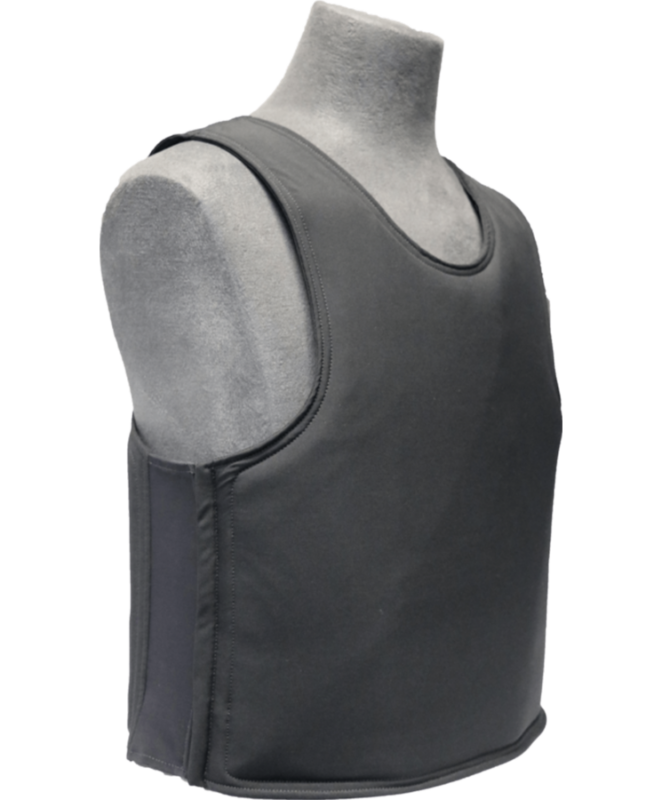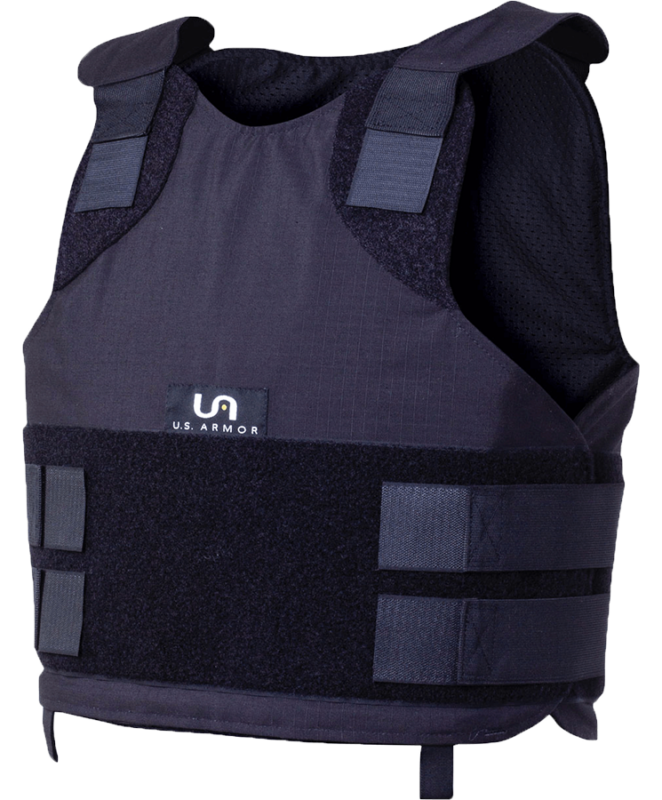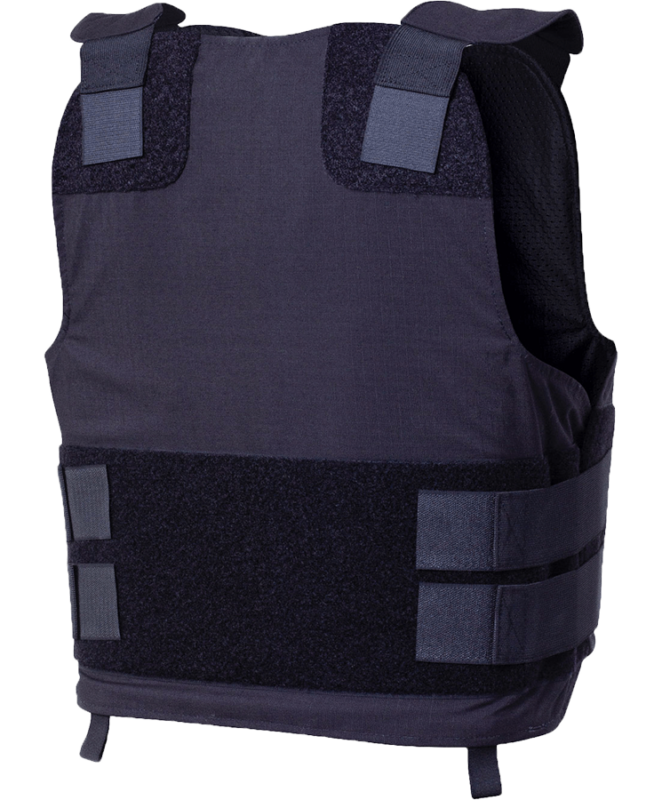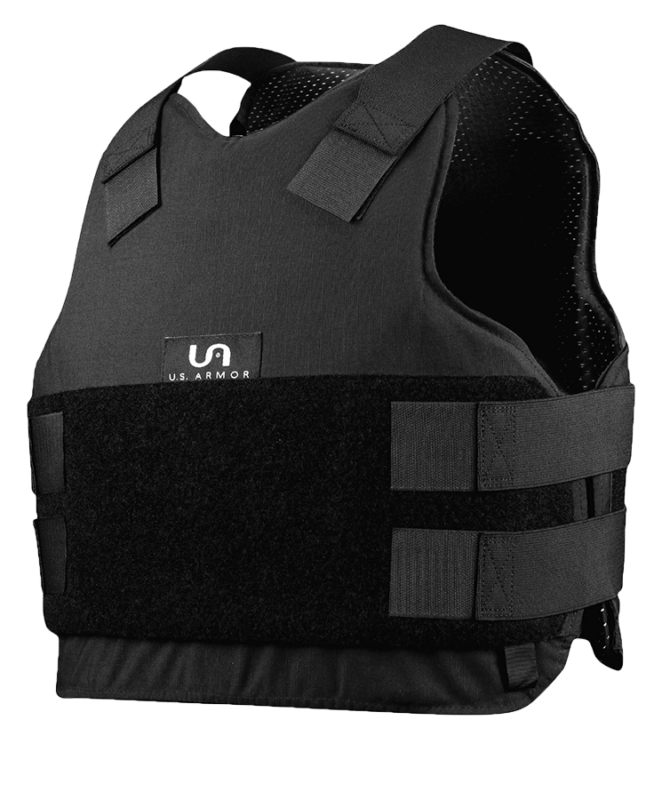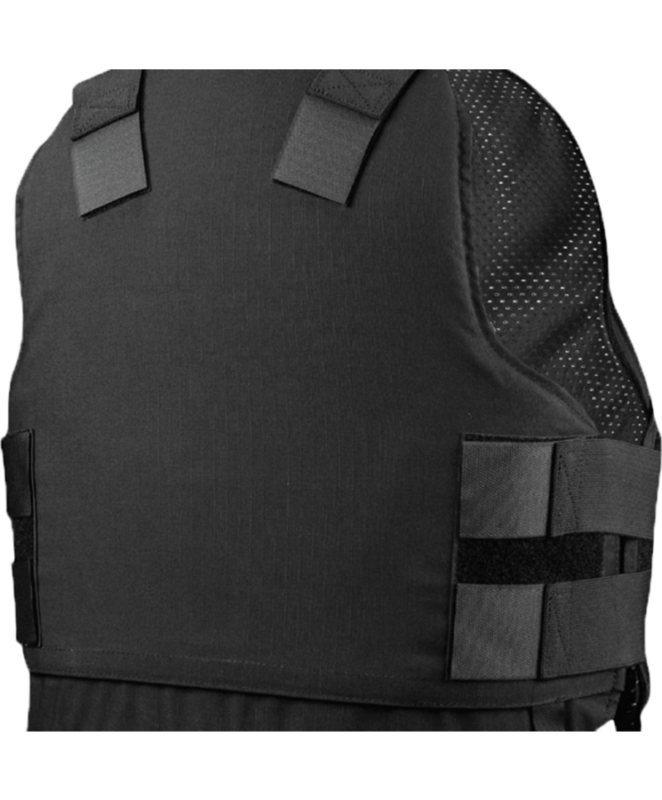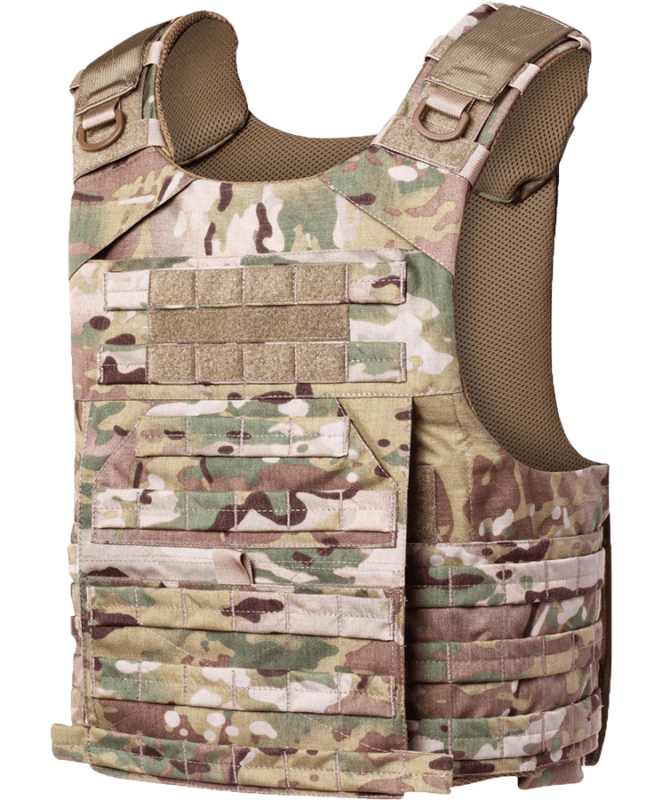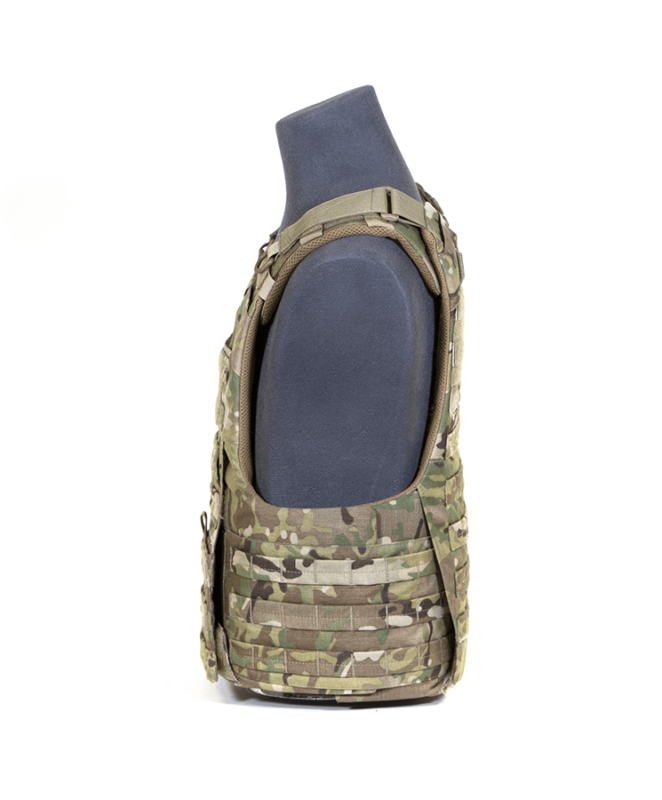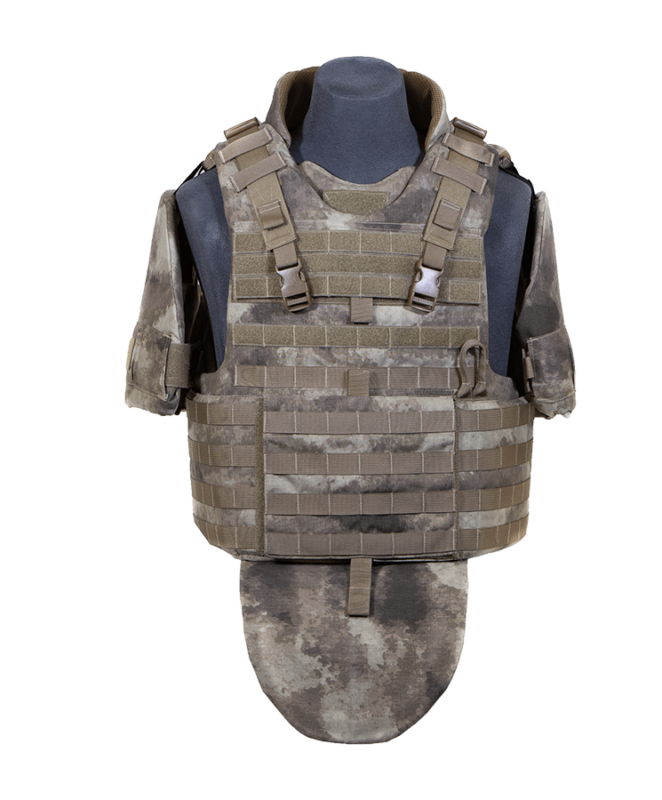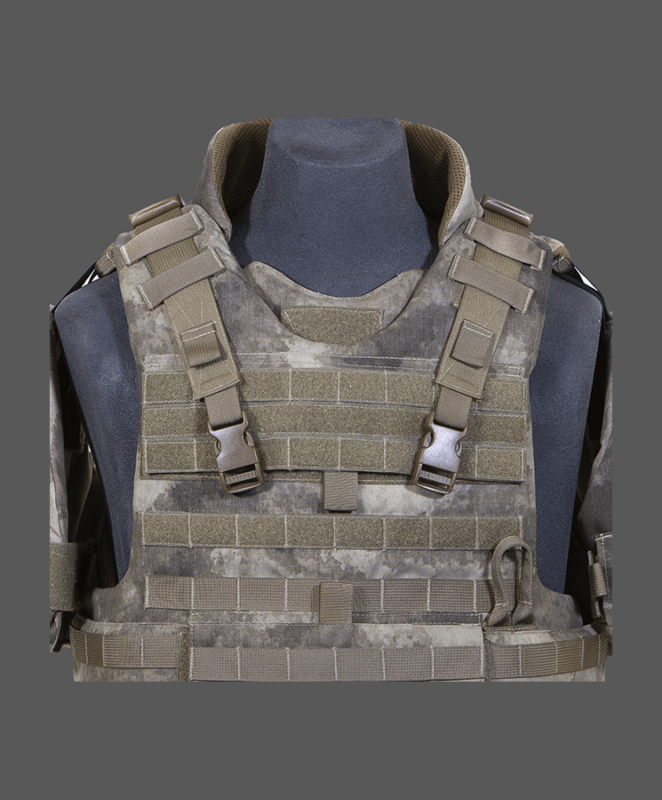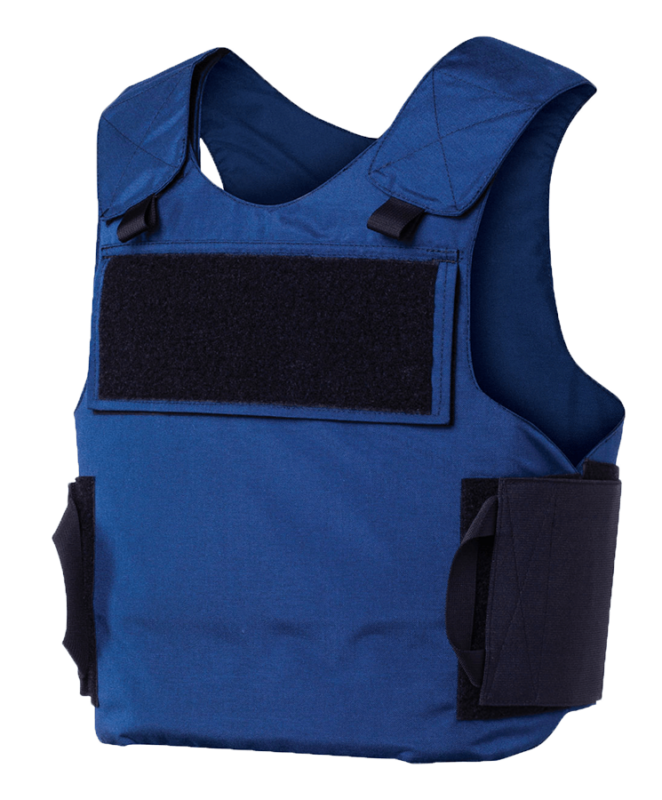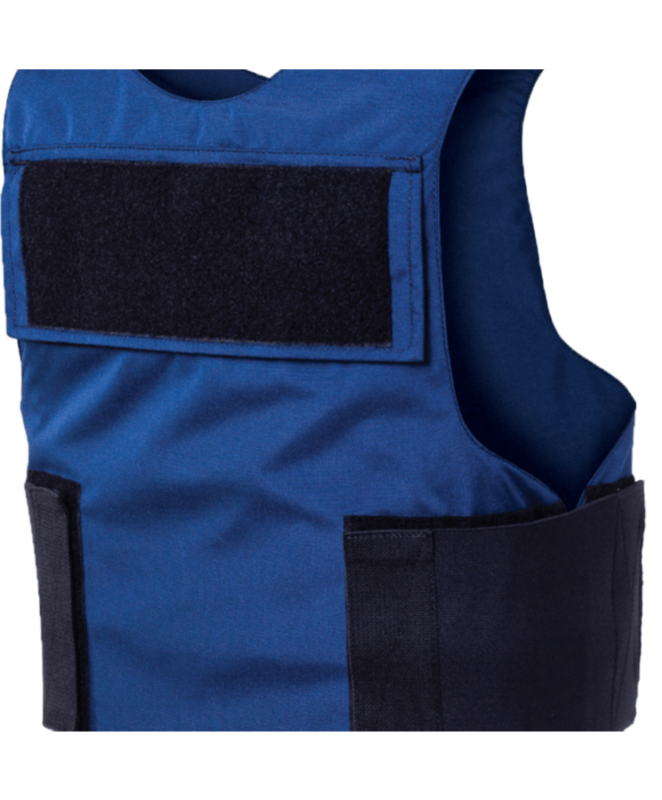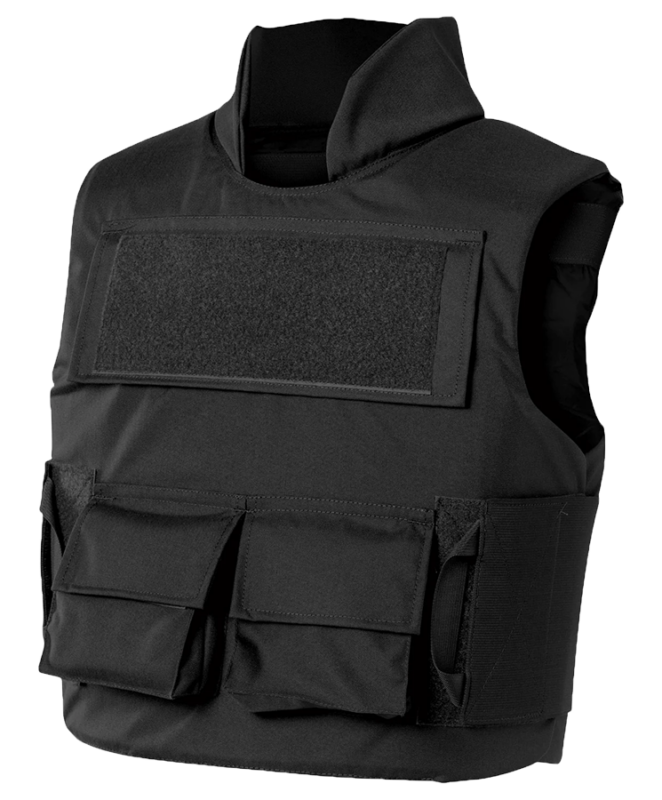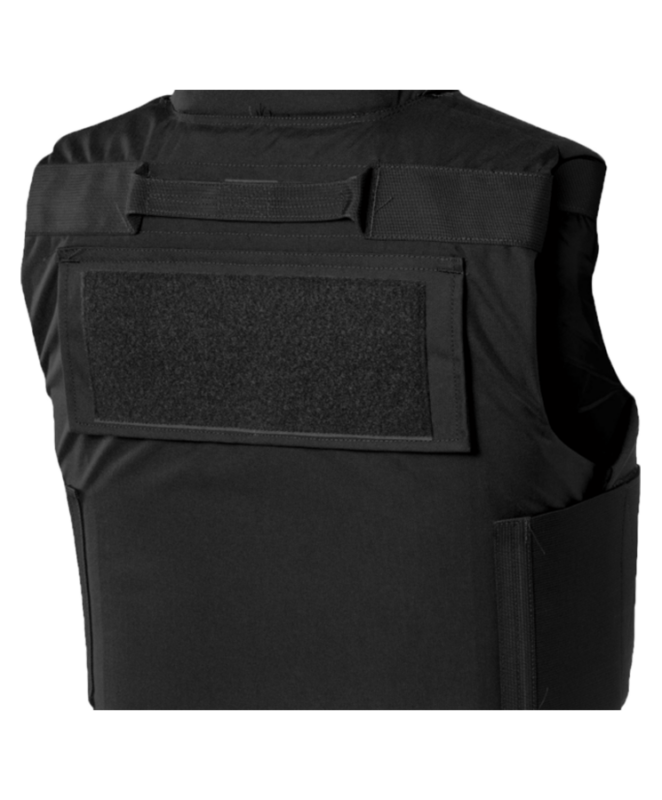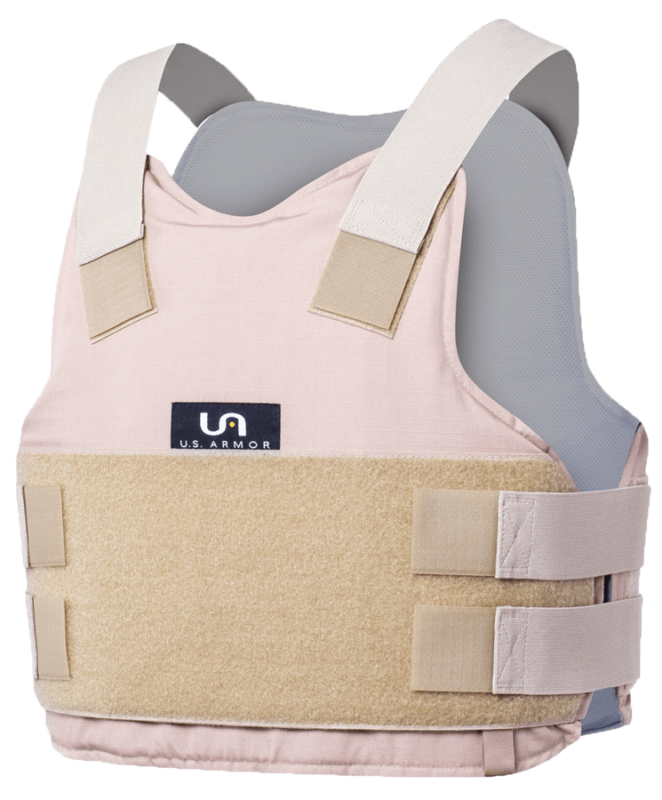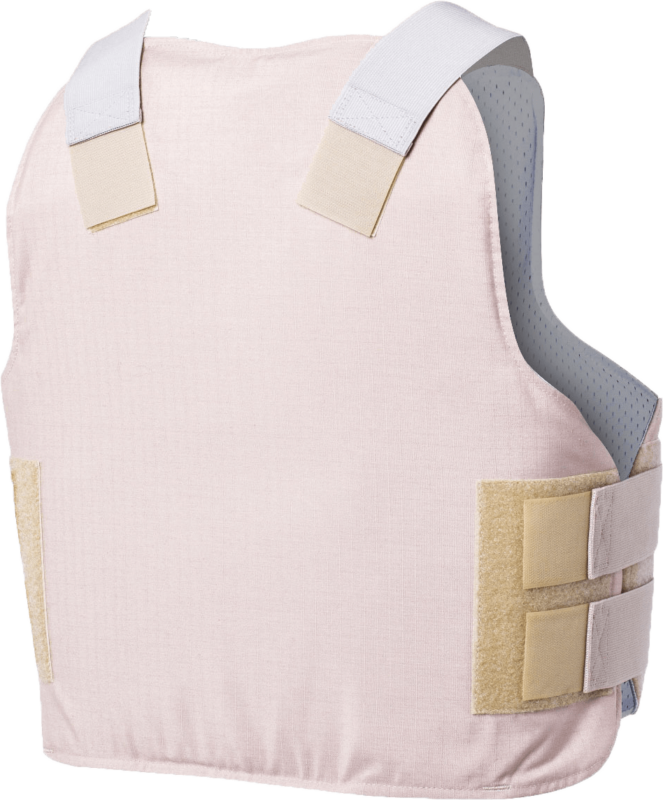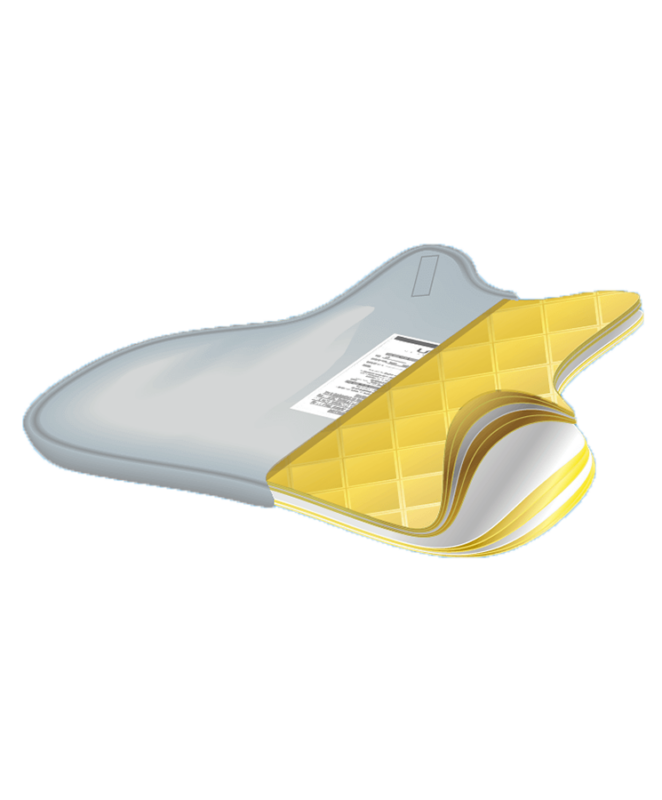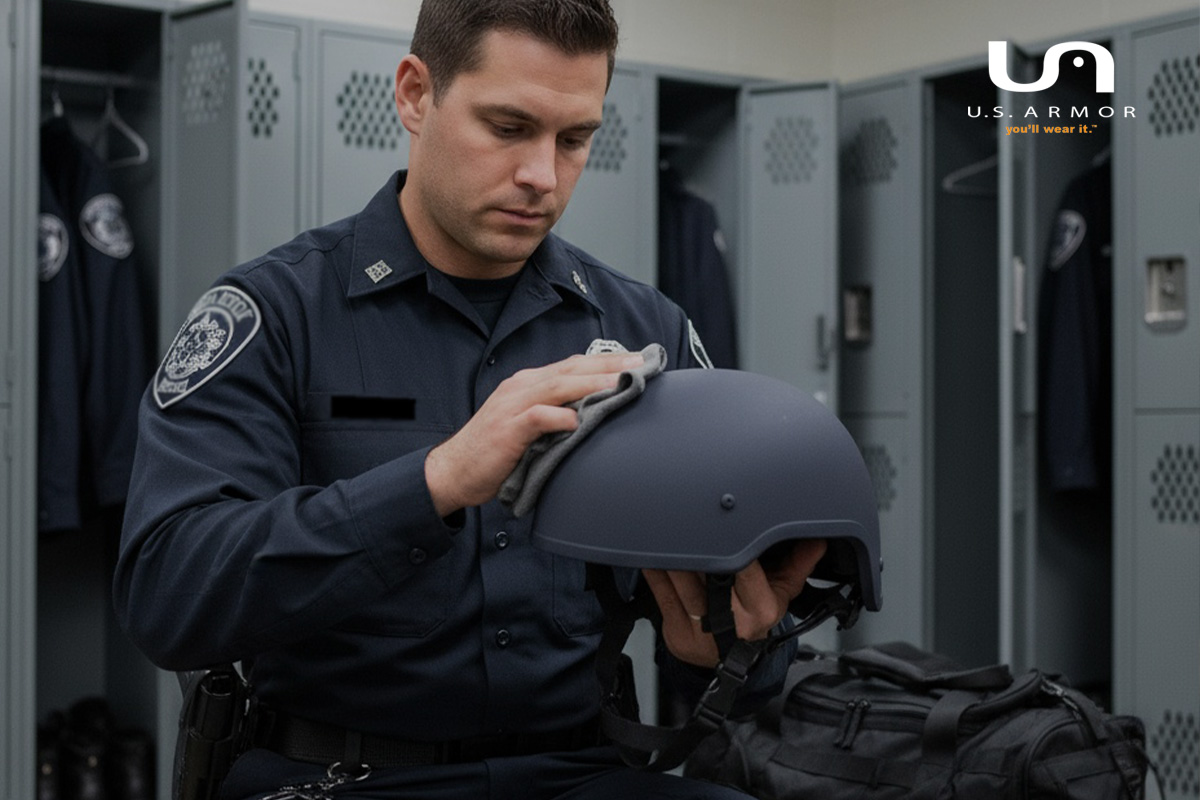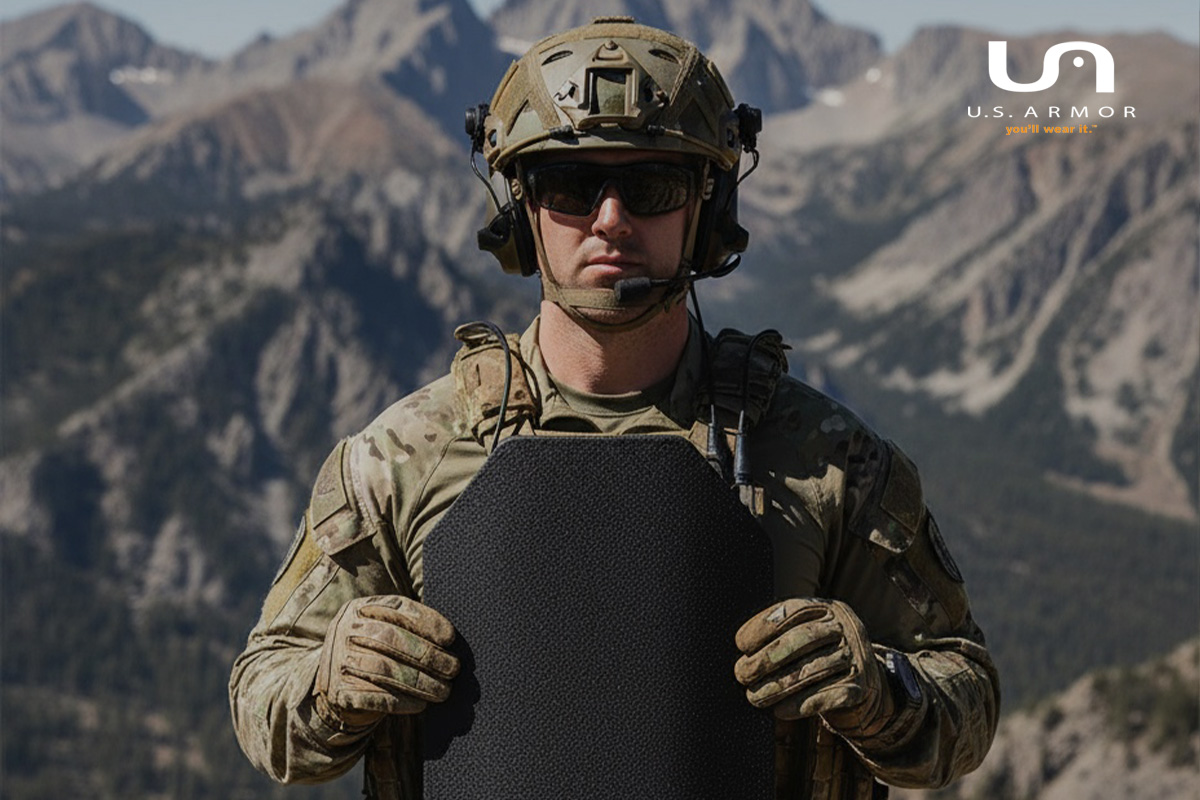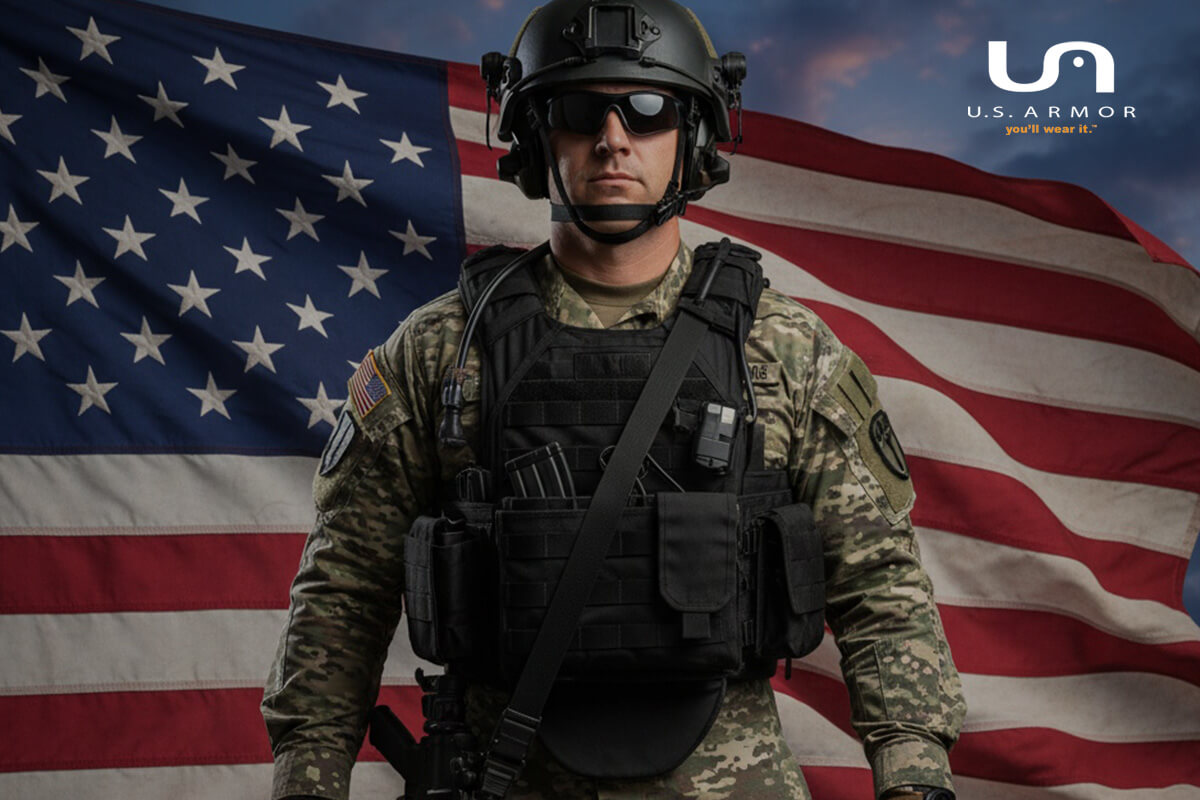Concealable Body Armor Guide: Low-Profile Protection for Law Enforcement
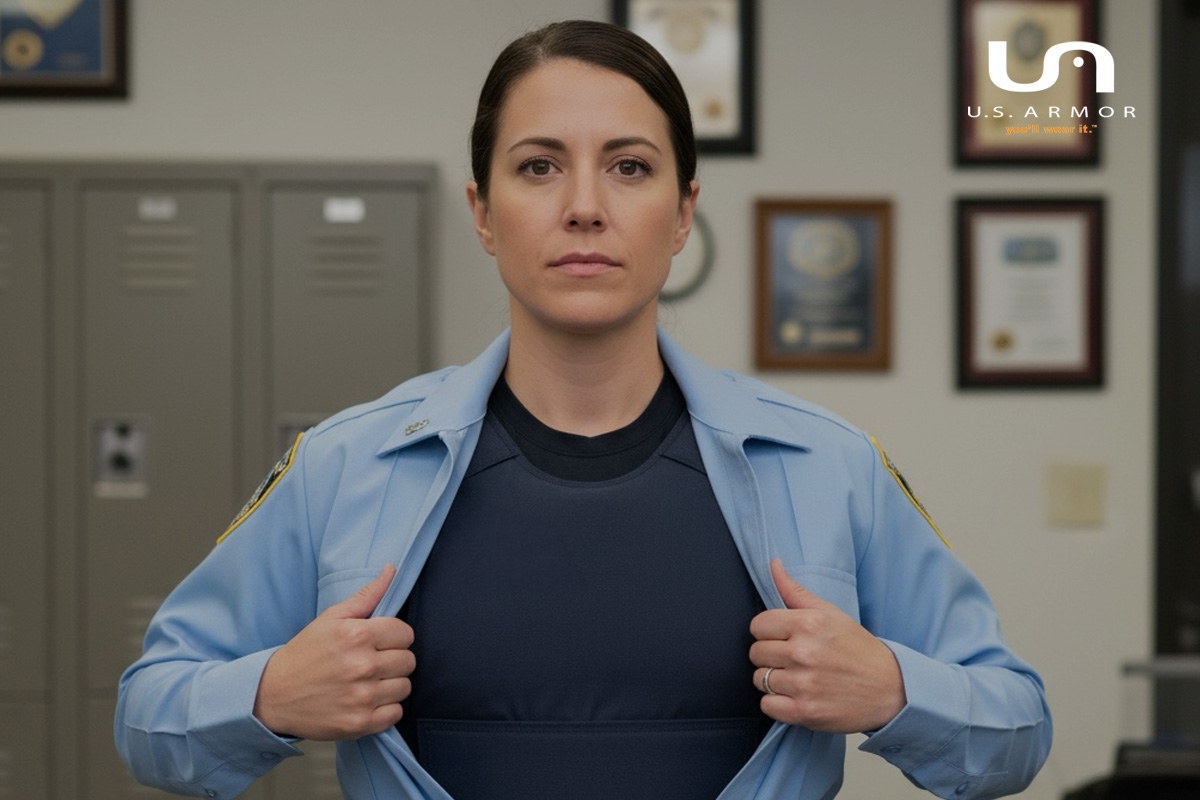
For detectives, plainclothes officers, and law enforcement personnel requiring daily-wear protection, concealable body armor represents the critical balance between life-saving ballistic protection and operational discretion. This concealable body armor guide provides comprehensive information to help officers select, fit, and maintain low-profile protection that performs when needed while remaining undetectable during daily duties.
Concealable body armor offers discreet protection for plainclothes officers, security professionals, and civilians. For a complete overview of all body armor types, including overt carriers and hard armor options, visit our comprehensive body armor guide.
What is Concealable Body Armor? Understanding Low-Profile Protection
Concealable body armor is specifically designed soft armor that provides ballistic protection while remaining invisible under clothing. Unlike tactical vests worn externally, concealable armor prioritizes thin profile, flexibility, and comfort for extended wear during routine duties.
Key Characteristics of Concealable Body Armor:
- Thin profile: Typically 0.25-0.5 inches thick, allowing concealment under dress shirts, polo shirts, and civilian clothing
- Flexible construction: Soft ballistic materials that move with the body rather than rigid plates
- Lightweight design: Usually 3-6 pounds depending on protection level and coverage area
- Breathable carriers: Moisture-wicking materials and ventilation features for all-day comfort
- Professional appearance: Designed to maintain a professional, non-tactical appearance
Who Needs Concealable Body Armor? Concealable armor serves law enforcement personnel whose duties require protection without the tactical appearance of external vests:
- Detectives and investigators conducting interviews and surveillance
- Plainclothes officers working undercover or in sensitive environments
- Court officers and bailiffs maintaining professional courtroom appearance
- Administrative personnel in law enforcement facilities
- Off-duty officers carrying concealed firearms
- Patrol officers preferring armor under uniform shirts
- Federal agents and task force members in civilian settings
Protection Philosophy: Concealable body armor protects against the most common handgun threats encountered in law enforcement. While it doesn’t provide rifle protection like hard plates, it defends against the vast majority of threats officers face during routine duties, arrests, and unexpected confrontations.
Browse U.S. Armor’s concealable plate carrier options that combine ballistic protection with discreet, professional appearance.
ACS Concealable Body Armor
ACS-EXP Concealable Body Armor
Covert / T-Shirt Carrier
HVC Concealable Body Armor
Poly Cotton Concealable Body Armor
Concealable Body Armor Protection Levels: NIJ IIA, II, and IIIA
The National Institute of Justice (NIJ) establishes ballistic resistance standards for body armor. Understanding these protection levels is essential to this concealable body armor guide.
NIJ Level IIA (2A):
- Protection: Stops 9mm FMJ (124 grain) at 1,225 fps and .40 S&W FMJ (180 grain) at 1,155 fps
- Characteristics: Thinnest and lightest concealable option, typically 0.25-0.35 inches thick, Weight: 2.5-4 pounds, Most comfortable for extended wear, Easiest to conceal under lightweight clothing.
- Best for: Administrative personnel, court officers, and situations where threat level is lower but some protection is desired. Also suitable for officers in extremely hot climates where comfort is paramount.
- Limitations: Does not stop higher-velocity rounds or many common law enforcement calibers at close range.
NIJ Level II:
- Protection: Stops 9mm FMJ (124 grain) at 1,305 fps and .357 Magnum JSP (158 grain) at 1,430 fps
- Characteristics: Moderate thickness and weight, typically 0.35-0.45 inches thick, Weight: 4-5 pounds, Good balance of protection and concealability, Still concealable under most clothing.
- Best for: Detectives and plainclothes officers needing reliable protection against common handgun threats while maintaining low profile.
- Protection upgrade: Significantly better than Level IIA against higher-velocity handgun rounds.
NIJ Level IIIA (3A):
- Protection: Stops .357 SIG FMJ (125 grain) at 1,470 fps and .44 Magnum SJHP (240 grain) at 1,430 fps
- Characteristics: Thickest soft armor option, typically 0.45-0.55 inches thick, Weight: 5-7 pounds, Maximum handgun protection available in soft armor, Still concealable but requires more careful clothing selection.
- Best for: Officers in high-threat environments, gang task forces, narcotics units, and personnel who prioritize maximum handgun protection over minimal profile.
- Protection advantage: Stops virtually all handgun threats including high-velocity rounds and magnum calibers.
Choosing the Right Protection Level: Most law enforcement agencies specify Level IIIA as standard because it provides maximum handgun protection. However, individual circumstances may warrant different choices:
- High-threat environments: Level IIIA mandatory
- Balanced protection and comfort: Level II excellent compromise
- Extreme heat or minimal threat: Level IIA acceptable with agency approval
- Undercover work: Highest level that maintains concealment in required clothing
All concealable armor undergoes rigorous NIJ ballistic vest testing and effectiveness validation.
Concealable vs Tactical Body Armor: Key Differences
Understanding the distinction between concealable and tactical armor helps officers select appropriate protection for different duties.
Design Philosophy:
- Concealable armor: Prioritizes low profile, comfort, and discretion. Designed for extended wear during routine duties where tactical appearance is inappropriate or counterproductive.
- Tactical armor: Prioritizes maximum protection, load-bearing capability, and quick donning/doffing. Designed for high-risk operations where tactical appearance is expected and appropriate.
Protection Differences:
- Concealable: Soft armor only (NIJ IIA, II, or IIIA), Handgun protection exclusively, No provision for hard plates, Coverage typically front and back torso only.
- Tactical: Soft armor base with hard plate capability, Rifle protection when plates inserted, Modular design accepting various plate types, Options for side, shoulder, and groin protection.
Comfort and Wearability:
- Concealable: Designed for 8-12 hour daily wear, Emphasis on breathability and moisture management, Minimal bulk and weight, Moves naturally with body, Can be worn under regular clothing.
- Tactical: Designed for shorter-duration high-intensity operations, Heavier and bulkier, More restrictive movement, Worn over clothing, Load-bearing features add weight.
Operational Considerations:
- Concealable advantages: Maintains professional appearance, Doesn’t escalate situations with tactical presence, Comfortable enough for daily compliance, Appropriate for court, interviews, and community interaction, Provides protection during off-duty carry.
- Tactical advantages: Superior protection including rifle threats, Carries additional equipment (magazines, radio, medical), Quick to don for emergency response, Appropriate for high-risk warrants and tactical operations, Visible deterrent in appropriate situations.
The Two-Armor Solution: Many officers and agencies employ both types:
- Daily wear: Concealable armor for routine duties, investigations, and court
- Tactical operations: External carrier with plates for warrants, active threats, and high-risk situations
Vehicle-based: Tactical vest stored in patrol vehicle for rapid deployment when needed.
For a comprehensive comparison of armor types and protection levels, review our detailed analysis.
Tactical Body Armor Solutions
MSTV 700 – Mission Specific Tactical Vest
Rock 500 Tactical Vest
Special Operations Tactical Vest (SOV G2)
Tac Con G2 Tactical Vest
Tactical Correctional Vest G2
Best Concealable Body Armor for Daily Patrol
Selecting the best concealable body armor for patrol duty requires balancing protection, comfort, durability, and departmental requirements.
Essential Features for Patrol Use:
- Protection level: NIJ Level IIIA provides maximum handgun protection and is standard for most agencies.
- Coverage area: Full torso coverage front and back, extending from collar to waist and wrapping around sides.
- Carrier design: Moisture-wicking materials with ventilation channels.
- Durability: Reinforced stitching, quality materials, and robust construction.
- Adjustability: Multiple adjustment points (shoulders, sides, waist).
- Trauma plate compatibility: Pockets for trauma plates provide additional blunt force protection.
Patrol-Specific Considerations:
- Vehicle time: Armor should not bunch, allow comfortable seatbelt use, and permit full range of motion.
- Physical activity: Armor must stay in position during vigorous movement and not restrict breathing or mobility.
- Weather exposure: Must be moisture-wicking for hot weather and thin enough for layering under winter uniforms.
- Maintenance requirements: Look for removable, washable carriers and easy panel removal for airing.
- Uniform compatibility: Must conceal under standard uniform shirts, jackets, and outer layers.
Quality Indicators:
- NIJ certification (verify certification number)
- Reputable manufacturer with law enforcement track record
- Comprehensive warranty (typically 5-7 years)
- Positive reviews from other patrol officers
- Agency approval and compliance with departmental standards
U.S. Armor’s concealable body armor carriers provide maximum handgun protection in a low-profile design perfect for daily patrol.
Fitting Concealable Body Armor: Comfort and Coverage
Proper fit is critical for both protection and compliance. Poorly fitted armor provides inadequate coverage, causes discomfort, and often goes unworn.
Proper Fit Criteria:
- Coverage: Top should reach sternal notch; bottom extends to navel or slightly below; sides wrap around torso.
- Comfort indicators: No pressure points or binding, stays in position during movement, breathing unrestricted.
- Mobility check: Full range of arm motion, ability to bend, twist, and crouch without restriction, comfortable when seated.
Sizing Process:
- Measurements: Chest circumference, torso length (sternal notch to navel), weight, height, and body type.
- Try-on evaluation: Wear armor over a t-shirt, adjust all straps, perform movement tests, and wear for 15-20 minutes.
- Concealment check: Put on duty shirt/clothing, verify no visible lines or bulges from all angles.
Common Fit Problems and Solutions:
- Armor rides up: Tighten waist straps, consider size with longer torso length.
- Shoulder discomfort: Adjust shoulder straps to distribute weight, consider wider strap design.
- Restricted breathing: Loosen side straps slightly, consider larger size or different cut.
- Gaps in coverage: Adjust straps, may need different size or style.
Gender-Specific Fit Considerations: Female officers require armor designed for female anatomy. Male officers with larger or athletic builds may need extended sizes or custom options.
Break-In Period: Wear for progressively longer periods, fine-tune strap adjustments over the first week, and materials soften slightly with use.
Follow our proper measurement and fitting techniques to ensure maximum protection and comfort.
Concealment Strategies: Wearing Armor Under Uniforms and Civilian Clothes
Effective concealment requires understanding how clothing drapes over armor and selecting appropriate garments.
Under Law Enforcement Uniforms:
- Uniform shirts: Size up one size, choose shirts with slight room in chest and shoulders, avoid overly tight fits.
- Shirt material: Heavier weight, textured, or patterned fabrics conceal better.
- Undershirts: Wear a moisture-wicking undershirt between skin and armor.
Under Civilian Clothing (Plainclothes/Detective Work):
- Shirt selection: Button-down shirts one size larger, relaxed fit polo shirts, patterns/textures, darker colors.
- Jacket/outerwear: Sport coats or casual jackets provide excellent concealment. Layering helps break up the armor outline.
Professional Settings (Court, Meetings):
- Suits naturally accommodate concealable armor. Structured suit jackets hide armor completely.
Concealment Tips:
- Break up the armor outline with layers or patterns.
- Ensure armor doesn’t extend beyond shirt hem.
- Check concealment from all angles, especially when seated.
Additional Concealment Tips & Real-World Insights
Practical Concealment Tips:
- Choose performance fabrics: Brands like Under Armour Tactical, 5.11 Freedom Flex, and Propper I.C.E. Performance Polos offer moisture-wicking materials that help conceal armor outlines while keeping you cool.
- Patterned shirts work best: Subtle textures or micro-patterns (like those found in Tru-Spec 24-7 Series or Columbia Performance Button-Downs) effectively break up the armor’s silhouette.
- Size up strategically: Opt for one size larger than your usual shirt for added drape without looking baggy.
- Layer wisely: Lightweight jackets, sport coats, or overshirts help obscure seams or carrier edges.
- Mind the movement: Sit, bend, and reach while wearing your chosen outfit to ensure the armor remains hidden from all angles.
Recommended Clothing Styles for Concealment:
- Professional Settings: Structured blazers, untucked Oxford shirts, or wrinkle-resistant dress shirts (such as Van Heusen Flex Collar or 5.11 Women’s Fast-Tac).
- Casual/Undercover Environments: Relaxed-fit polos, flannels, or lightweight utility shirts (like Carhartt Force® or Tru-Spec Short Sleeve Performance).
- Hot Climates: Breathable, vented shirts with mesh panels—Columbia PFG and Vertx Guardian Polo are officer favorites.
Undercover Officer Testimonial:
“I’ve worn U.S. Armor’s concealable vest for over a year under everything from polos to suit jackets. With the right shirt choice—usually a textured button-down—no one ever notices it’s there. It gives me confidence without drawing attention.”
— Detective S., Undercover Division, California
Climate Considerations for Concealable Body Armor
Climate significantly impacts armor comfort and compliance. This concealable body armor guide addresses environmental challenges.
Hot Weather Challenges and Solutions:
- Challenge: Armor traps heat, prevents cooling, increases sweat, and can lead to heat exhaustion.
- Solutions: Choose thinner armor (Level II vs IIIA) if possible, select carriers with maximum ventilation (mesh, spacer fabric), wear moisture-wicking undershirts, stay hydrated, and air out armor daily.
Cold Weather Considerations:
- Layering: Armor worn over a base layer, under outer garments. Ensure winter uniform accommodates armor bulk.
- Flexibility: Allow armor to warm to body temperature before vigorous activity.
Humid Environments:
- Solutions: Premium moisture-wicking carriers are essential, change undershirts mid-shift if possible, thoroughly air-dry armor daily, and clean carriers more frequently.
Hot, humid climates require proper storage and environmental care to prevent armor degradation.
Concealable Body Armor for Female Officers: Fit and Design
Female officers have unique fit requirements that unisex armor cannot adequately address. Proper female-specific armor is essential for comfort, protection, and compliance.
Why Female-Specific Armor Matters:
- Female anatomy requires different armor design (chest contours, shorter torso, narrower shoulders).
- Unisex armor creates gaps in coverage, uncomfortable pressure, and leads to non-compliance.
Female-Specific Design Features:
- Contoured panels designed for female anatomy.
- Appropriate sizing for typically shorter torso lengths.
- Shoulder straps positioned for narrower shoulder width.
- Tapered sides for proper body contours.
Fit Considerations for Female Officers:
- Coverage verification: Must cover the entire chest area without gaps, especially during movement.
- Comfort assessment: No pressure points, straps don’t dig, and comfortable for extended wear.
Pregnancy Considerations: Standard armor may not fit during pregnancy. Some manufacturers offer maternity options. Consult with the department and medical provider.
U.S. Armor offers concealable carriers designed for all body types, ensuring proper fit and coverage for female officers.
Concealable Options for Females
ACS Concealable Body Armor
ACS-EXP Concealable Body Armor
BSII+2 Multi Threat Vest (NIJ .05)
Enforcer 6000 Series Female Model 6226F – NIJ 0101.06 – Level II
Maintenance and Care for Concealable Armor Systems
Proper maintenance extends armor life and ensures reliable protection. Concealable armor requires regular care due to daily wear and body contact.
Daily Maintenance:
- Remove armor and hang to air dry after each shift.
- Allow complete drying before storage—never store damp armor.
- Visually inspect straps and carrier for wear or damage.
Carrier Cleaning:
- Process: Remove all ballistic panels. Machine wash cold, gentle cycle with mild detergent (no bleach/softener). Air dry completely—never machine dry.
- Frequency: Every 1-2 weeks with daily wear, or when soiled/odorous.
Ballistic Panel Care:
- Critical rule: Never machine wash ballistic panels.
- Spot clean only with a damp cloth and mild soap.
- Air dry completely if spot cleaned.
Storage Best Practices:
- Store armor flat, not folded or rolled.
- Keep in a cool, dry environment—avoid high heat, direct sunlight, or humidity.
- Do not store in vehicle trunks or near heaters.
When to Replace Concealable Body Armor:
- Manufacturer expiration: Most rated for 5 years (check label).
- Visible damage: Tears, creases, delamination, or moisture infiltration.
- After ballistic impact: Any armor that has stopped a round must be immediately replaced.
- Excessive wear: Frayed straps, broken stitching, or faded NIJ label.
Review our comprehensive body armor maintenance protocols to extend the life of your concealable armor.
U.S. Armor's Quality Assurance and Maintenance Support
Since 1986, U.S. Armor Corporation has not only manufactured superior ballistic protection but also supported customers throughout the entire armor lifecycle with comprehensive maintenance guidance and services.
Manufacturing Quality That Reduces Maintenance Burden:
U.S. Armor’s commitment to quality begins in manufacturing, creating products that maintain performance throughout their service life:
- Premium materials selected for durability and longevity
- Advanced construction techniques that resist delamination and degradation
- Rigorous quality control ensuring every product meets exacting standards
- Carriers designed for easy maintenance and cleaning
- Protective features that shield ballistic materials from environmental exposure
Comprehensive Maintenance Documentation:
Every U.S. Armor product includes detailed care instructions covering:
- Daily inspection protocols
- Cleaning procedures for carriers and ballistic components
- Storage recommendations
- Replacement indicators
- Warranty terms and conditions
Customer Support Services:
U.S. Armor provides ongoing support to help customers maximize armor performance and lifespan:
- Technical consultation: Expert guidance on maintenance questions and concerns
- Inspection services: Professional evaluation of armor condition and serviceability
- Training resources: Materials for training personnel on proper body armor maintenance
- Replacement planning: Assistance developing agency replacement schedules and budgets
- Warranty support: Straightforward warranty claims process for defective products
Agency Program Support:
For law enforcement agencies and military units, U.S. Armor offers program-level support:
- Customized maintenance protocols for specific operational environments
- Bulk inspection services for large equipment inventories
- Replacement cycle planning and budgeting assistance
- Training for equipment managers and supervisors
- Documentation systems for tracking armor lifecycle
Commitment to Long-Term Protection:
U.S. Armor understands that selling body armor is just the beginning of our relationship with customers. Our products have saved hundreds of lives over nearly four decades because they’re not only expertly manufactured but also properly maintained throughout their service life.
We’re committed to ensuring every officer and service member who depends on U.S. Armor receives the support needed to keep that protection performing at the highest level, day after day, year after year.
Protecting Those Who Protect Others
Maintaining your body armor properly ensures it provides reliable protection when you need it most. For more information on choosing the right body armor, understanding NIJ protection levels, and proper fitting techniques, explore our comprehensive body armor guide.
U.S. Armor stands ready to support your body armor maintenance program with expert guidance, professional services, and the highest-quality ballistic protection available. Contact us to discuss your maintenance needs or to learn more about how our products and services can enhance your personnel protection program.
Final Thoughts: Selecting Concealable Body Armor That Protects and Performs
For law enforcement professionals, concealable body armor is a life-saving tool that must balance protection, comfort, and discretion.
When selecting armor, prioritize verified NIJ certification, proper fit, and reputable manufacturers. Regular maintenance, correct wear practices, and climate-appropriate carriers all contribute to consistent protection.
Remember: The best body armor is the one you’ll wear every day. Properly fitted, comfortable, and well-maintained concealable armor keeps you safe—and ready—no matter the assignment.
FAQ: Concealable Body Armor
Can concealable body armor stop rifle rounds?
No. Concealable armor is soft armor designed for handgun protection only. Rifle threats require hard plates or tactical vests rated Level III or IV. Concealable body armor provides NIJ Level IIA, II, or IIIA protection, which defends against handgun calibers including 9mm, .40 S&W, .357 Magnum, .44 Magnum, and similar threats. For rifle protection, officers need hard armor plates inserted into tactical plate carriers.
How long does concealable body armor last?
Most manufacturers rate armor for 5 years under normal use. Regular inspections and proper maintenance are essential for extending lifespan. The warranty period typically ranges from 5-7 years depending on the manufacturer and materials used. However, armor should be replaced immediately if it shows signs of damage, has been exposed to excessive moisture or heat, or has stopped a ballistic threat. Always check the manufacturer's label for the specific expiration date and follow your agency's replacement protocols.
Can body armor be washed?
Only the carrier may be washed according to manufacturer guidelines. Ballistic panels should never be submerged or machine-washed—wipe clean with a damp cloth and air dry. To properly clean your armor system, remove all ballistic panels from the carrier, close all hook-and-loop fasteners, and machine wash the carrier on a gentle cycle with cold water and mild detergent. Never use bleach or fabric softener. Air dry the carrier completely before reinserting the ballistic panels. For the panels themselves, spot clean only with a damp cloth and mild soap, then allow to air dry thoroughly.
What's the difference between concealable and overt armor?
Concealable armor is worn under clothing for discretion, while overt armor is worn externally, often with tactical attachments and plate inserts for rifle protection. Concealable armor prioritizes low profile, comfort, and all-day wearability for detectives, plainclothes officers, and personnel requiring professional appearance. Overt tactical armor prioritizes maximum protection, load-bearing capability, and modular design for high-risk operations. Many officers use both types: concealable armor for daily duties and tactical armor for warrants, active threats, and special operations.
How should concealable armor fit?
Armor should cover from the sternal notch to the navel, wrap securely around the torso, and allow full arm mobility without restricting breathing or movement. Proper fit means no gaps in coverage when you raise your arms, bend, or twist. The armor should stay in position during physical activity without constant adjustment, distribute weight evenly across your shoulders and torso, and remain comfortable during extended wear. Straps should be snug but not restrictive, and the armor should conceal completely under your uniform or civilian clothing without visible lines or bulges.
Is female-specific body armor really necessary?
Yes, absolutely. Female officers require armor specifically designed for female anatomy to ensure proper coverage, comfort, and protection. Unisex armor creates dangerous gaps in coverage, uncomfortable pressure points, and often leads to non-compliance. Female-specific armor features contoured panels, appropriate torso length, narrower shoulder positioning, and tapered sides that follow natural body contours. This design provides complete protection of vital organs while remaining comfortable enough for all-day wear, which is critical for officer safety and compliance.
Can I wear expired body armor?
No. Expired body armor should be replaced immediately as the ballistic materials degrade over time, compromising protection. Even if the armor appears intact, the fibers lose their ability to effectively stop ballistic threats after the manufacturer's rated lifespan. Using expired armor puts your life at risk. Most agencies have replacement programs that ensure officers receive new armor before their current vest expires. If your armor is approaching or past its expiration date, contact your department's equipment coordinator or the manufacturer immediately to arrange replacement.
What protection level should I choose for daily wear?
Most law enforcement agencies specify NIJ Level IIIA as standard because it provides maximum handgun protection while remaining concealable. Level IIIA stops virtually all handgun threats including high-velocity rounds and magnum calibers (.357 SIG, .44 Magnum). However, your choice should be based on your specific threat environment, agency requirements, and climate considerations. Level II offers excellent protection against common threats with improved comfort in hot climates, while Level IIA provides basic protection for lower-threat environments. Always consult your agency's policy and conduct a realistic threat assessment for your duty assignment.
How do I know if my body armor is NIJ certified?
Look for the NIJ certification label permanently attached to the armor, which includes the certification number, protection level, manufacturer information, and expiration date. You can verify certification by checking the NIJ's Compliant Body Armor Model List on the National Institute of Justice website. Be cautious of armor claiming to be "NIJ tested" or "meets NIJ standards" without actual certification—only armor that has passed the complete NIJ certification process and appears on the official list provides verified protection. Reputable manufacturers like U.S. Armor Corporation clearly display NIJ certification information on all certified products.
Can I add trauma plates to concealable armor?
Yes, many concealable armor carriers include pockets for trauma plates, which provide additional blunt force protection and help distribute impact energy. Trauma plates don't increase ballistic protection level but reduce the risk of blunt force trauma from impacts that the soft armor stops. They're particularly beneficial for officers in high-threat environments or those who have experienced previous impacts. Ensure any trauma plates you add are compatible with your carrier design and don't compromise the armor's flexibility or concealability.
ACS Concealable Body Armor
ACS-EXP Concealable Body Armor
HVC Concealable Body Armor
Poly Cotton Concealable Body Armor
Protect Your Team with Trusted Concealable Body Armor
Since 1986, U.S. Armor Corporation has been the trusted choice of law enforcement professionals who demand uncompromising protection without sacrificing comfort or concealability. Our NIJ-certified concealable body armor systems are engineered specifically for the daily demands of detectives, plainclothes officers, and patrol personnel who need reliable protection that performs shift after shift.
Why Law Enforcement Professionals Choose U.S. Armor:
- NIJ Certified Protection: All armor meets or exceeds National Institute of Justice standards with verified certification
- Proven Track Record: Trusted by elite military and law enforcement agencies worldwide for nearly four decades
- Female-Specific Designs: Purpose-built armor for female officers, not adapted unisex solutions
- Climate-Optimized Carriers: Advanced moisture-wicking and ventilation technology for all-day comfort
- Comprehensive Warranty: Industry-leading warranty coverage backed by American manufacturing quality
Now that you understand concealable body armor options, explore the full range of protection solutions including tactical carriers, hard armor plates, and sizing guidance in our comprehensive body armor guide.
Ready to upgrade your department's concealable armor program? Contact U.S. Armor Corporation today to discuss your agency's specific requirements, arrange product demonstrations, or request a quote. Our law enforcement specialists understand your unique challenges and will help you select the right protection solution for your team.
Explore U.S. Armor's concealable ballistic vest systems, designed for comfort, protection, and all-day wearability.
